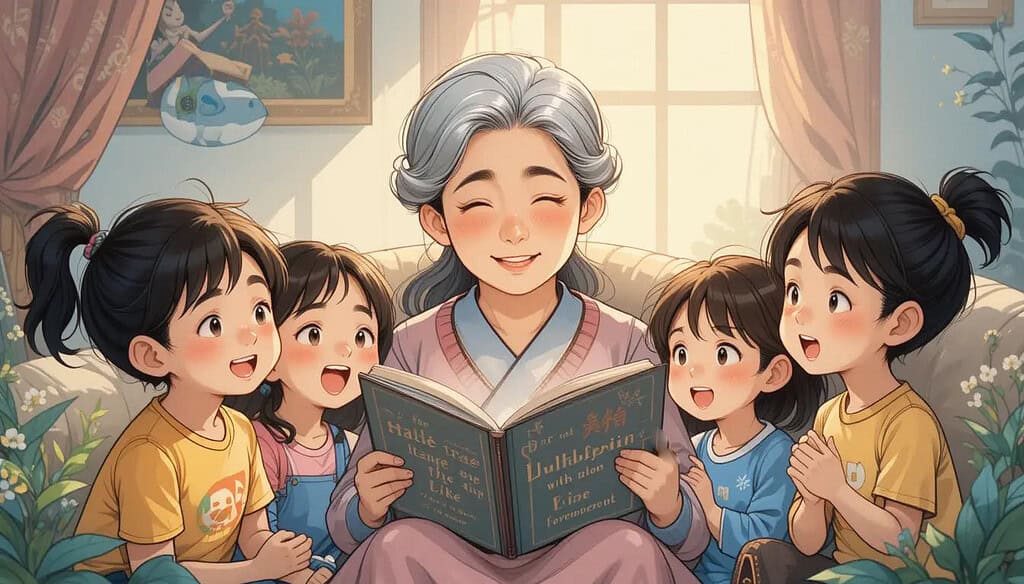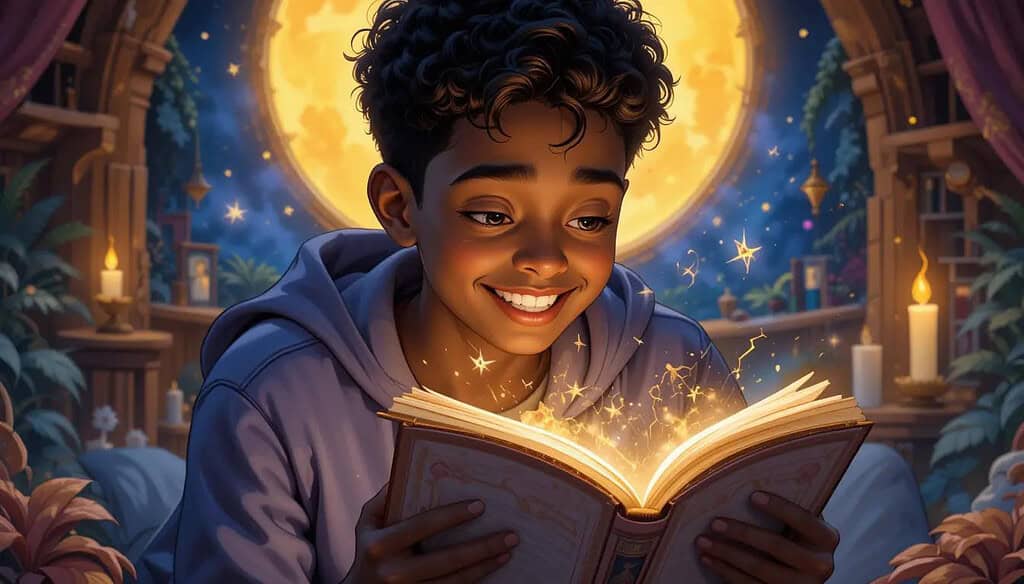Table of Contents
Storytelling Psychologies: Honored Guests At The Table

Storytelling Psychologies — Honored Guests At The Table
In today’s world, storytelling is everywhere – movies, books, podcasts, and even ads. And, as technology evolves, so does the way we tell stories. One thing is for sure: storytelling psychologies play a huge role in creating narratives that stick with us. These psychologies aren’t just theories; they’re the emotional triggers, mental cues, and brain mechanics that make stories powerful and relatable.
We all know that e-readers have become an essential personal tech device, enabling us to consume stories on-the-go. They’ve transformed how we access tales, from the printed page to the digital world, and helped foster a deeper connection to stories. But what makes these stories captivating? That’s where storytelling psychologies come in. They help shape our experience and engagement with a narrative. Whether it’s a heart-pounding thriller or a feel-good drama, storytelling psychologies are the unsung heroes behind the magic. They influence how we feel, how we relate, and even how we interpret the events unfolding.
Imagine a dinner party, where each guest brings something unique to the table. One guest might be the life of the party, keeping the conversation flowing, while another might be a bit more mysterious, creating intrigue with every word. These guests are the storytelling psychologies – each one with a distinct trait that adds to the overall experience of the story. Some psychologies make us empathize with characters, others add suspense or surprise, and still, others help us understand deeper meanings. These psychologies are the glue that holds a narrative together, and they give the story depth and dimension.
So, what are these storytelling psychologies, and how do they shape the way we experience a tale? In the next point, we’re going to discuss 8 top storytelling psychologies, each with its unique impact on the way stories are told and experienced.
Storytelling Psychologies: Meet the 8 Inspiring Guests

Storytelling Psychologies — Meet the 8 Inspiring Guests
1. Storytelling Psychologies: Empathy – The Relatable Guest
Empathy is that warm, welcoming guest who immediately makes you feel understood. Imagine you’re at a dinner party, and this person can sense exactly how you’re feeling, offering words of comfort or excitement based on your mood. In storytelling, empathy helps the audience emotionally connect with characters, making their joys, fears, and struggles feel personal.
Without empathy, characters might as well be cardboard cutouts. Think about the stories that have made you tear up or smile broadly; it’s empathy at work. This storytelling psychology allows us to see the world through the eyes of the characters, understanding their motivations and actions. Whether it’s a tragic hero or an underdog rising to greatness, empathy is the key that unlocks those deep emotional connections.
The impact of empathy is truly remarkable. It forges a connection between the storyteller and the audience, transforming a brief moment in a narrative into something memorable. Without empathy, characters may feel remote, leading to a lack of interest or engagement from the audience. Therefore, as you craft your story, consider whether your audience can truly resonate with your characters’ emotions. If the answer is no, it may be time to embrace empathy and infuse your narrative with the emotional depth it needs to flourish.
2. Storytelling Psychologies: Suspense – The Mysterious Guest
Now, let’s talk about suspense—the guest who keeps everyone on edge, always holding something back, leaving just enough mystery to keep people guessing. Suspense is a master of the cliffhanger, the plot twist, and the art of anticipation. It’s the psychology that makes us eagerly turn the page or stay glued to the screen, desperate to know what happens next.
Suspense is all about tension. It pulls at us, making us crave resolution. Think about your favorite thrillers, horror stories, or detective tales—what keeps you on the edge of your seat? It’s suspense. It’s the constant feeling that something is about to happen, but you’re not sure when or how. This creates a sense of urgency, compelling the audience to stick around and find out what happens next.
One of the best things about suspense is its ability to manipulate our emotions. It taps into our natural curiosity and fear of the unknown. Whether it’s a dark alley, a ticking clock, or a secret yet to be revealed, suspense keeps us invested in the story. It’s like that mysterious guest who’s always dropping hints but never fully explaining themselves. By the end of the night, they’ve got you hooked, and you can’t help but wonder what they’ll say next.
Suspense is a psychology that thrives on pacing and timing. When used strategically, it can make a simple story feel like an epic journey, turning every twist and turn into a suspense-filled moment. So, when you’re writing your next story, consider adding a touch of suspense—it’s the kind of guest who knows how to make an impression.
3. Storytelling Psychologies: Curiosity – The Questioning Guest
Curiosity is like a visitor who comes with a multitude of questions. It prompts inquiries such as, “Why is that?” “What will happen next?” and “What does this imply?” In the realm of storytelling, curiosity propels the narrative by presenting questions and enigmas that demand resolution. This psychological element compels us to continue reading or watching, eager to uncover the answers.
Curiosity serves as the catalyst for the pivotal question that ignites every thrilling journey: “What if…?” This aspect of storytelling appeals to our natural urge to comprehend the world and pursue knowledge. It keeps the audience engaged, pondering the potential outcomes and encouraging a deeper connection with the story. Without curiosity, a narrative risks becoming dull or predictable—lacking the intrigue that motivates us to care.
A perfect example of curiosity in storytelling is a classic whodunit mystery. The moment we’re introduced to a crime, we’re instantly drawn in by the desire to uncover the truth. The questions pile up: Who did it? Why did they do it? What’s the next clue? These questions fuel the story, keeping us engaged and motivated to uncover the answers.
Curiosity is an essential part of any story because it makes the audience an active participant. We’re not just passive consumers; we’re asking questions right along with the characters. It’s the storytelling psychology that ensures we stay intrigued, invested, and ready to learn what comes next. So, next time you’re writing, be sure to weave in a little curiosity—it’s the secret ingredient that turns every question into an invitation to explore.
4. Storytelling Psychologies: Conflict – The Dynamic Guest
Every dinner party needs a little drama, right? That’s where conflict comes in. Conflict is the guest who stirs things up, challenges the status quo, and keeps the conversation from getting too comfortable. In storytelling, conflict is essential for creating tension, pushing characters to grow, and giving the story direction.
Conflict can come in many forms: internal struggles, external obstacles, or even clashes between characters. It’s the force that drives the plot forward, forcing characters to face challenges, make difficult choices, and evolve. Without conflict, a story would lack the energy and momentum that makes it interesting. Think about it—how can a character grow if they’re not confronted with obstacles? How can they discover who they really are if there’s nothing pushing them to change?
Conflict doesn’t always need to be overtly dramatic or aggressive; it can be nuanced or internal, such as a character wrestling with their own ambitions or principles. The essence of conflict lies in its ability to instill a sense of purpose and urgency within a story. It’s the psychological element that drives our interest, making us invested in the characters’ journeys and the stakes of their success or failure.
Incorporating conflict into your stories is crucial for making them dynamic. It’s the ingredient that keeps things moving, making sure your characters have something to fight for. So, when you’re crafting your next plot, ask yourself: what’s at stake for the characters? What conflict will they face? Once you answer that, you’ll have the foundation for a compelling, dynamic story.
5. Storytelling Psychologies: Resolution – The Harmonizing Guest
Every dinner party needs someone to bring things together and leave everyone feeling satisfied. That’s the role of Resolution in storytelling. Resolution is the guest who makes sure all the loose ends are tied up, the conflicts are resolved, and the characters have a chance to reflect on their journey. Without resolution, a story can feel incomplete, like it’s just trailing off without offering closure.
Resolution is the moment of catharsis, the emotional release after all the tension and drama have built up. It’s when everything falls into place, the answers are revealed, and the story finds its natural conclusion. This storytelling psychology is about offering the audience a sense of closure, making sure that everything that was promised earlier in the story is fulfilled.
A thoughtfully constructed resolution goes beyond simply wrapping things up; it aims to give the audience a feeling of emotional fulfillment. Whether it concludes with joy, a poignant goodbye, or a reflective pause, a good resolution prevents the story from feeling like it just stops. It delivers the emotional reward that the audience has been anticipating.
In every story, resolution is the moment when the narrative comes full circle. It’s the reward for sticking with the story, the moment when everything you’ve been through with the characters makes sense. So, if you’re writing a story, make sure to give your audience a resolution that feels earned and satisfying. It’s the storytelling psychology that leaves everyone at the table feeling content.
6. Storytelling Psychologies: Pattern Recognition – The Insightful Guest
Pattern Recognition is the guest who sees connections where others might miss them. In storytelling, this psychology helps the audience make sense of the narrative by identifying recurring themes, symbols, or motifs that tie everything together. Pattern recognition allows the audience to uncover hidden meanings and deeper layers within a story, making it feel cohesive and intentional.
Think about the recurring motifs in your favorite stories: the hero’s journey, the rise and fall of empires, the battle between good and evil. These patterns are part of what makes stories universally relatable. They tap into our shared understanding of human experiences, cultural symbols, and psychological triggers.
Pattern recognition doesn’t just happen on its own—it’s the result of careful storytelling. Writers plant clues, symbols, and structures throughout the narrative, creating a framework that the audience can follow and make sense of. This storytelling psychology helps the audience feel that there’s more beneath the surface, turning every plot twist and character decision into a piece of a larger puzzle.
Incorporating pattern recognition into your writing can make your stories feel deeper and more intricate. It encourages your audience to pay attention to the details, to notice the little things that might seem insignificant at first but are actually essential to the larger picture. When used well, pattern recognition makes a story feel like a work of art, with every element carefully placed for maximum impact.
7. Storytelling Psychologies: Emotional Contagion – The Expressive Guest
Emotional Contagion is the guest who brings a burst of energy to the party, making everyone feel what they feel. In storytelling, this psychology is all about transferring emotions from the characters to the audience. It’s the reason we laugh, cry, or feel nervous during a story—because the emotions of the characters are contagious.
Emotional contagion works on a deep, subconscious level. When we see a character experiencing joy, fear, sadness, or excitement, we mirror those emotions in our own bodies and minds. This makes the story feel more immersive and emotionally resonant. Emotional contagion is the secret sauce behind those stories that make us feel like we’ve been on a rollercoaster of emotions.
The key to emotional contagion is authenticity. The emotions of the characters must be believable and genuine for the audience to catch them. If the emotions are forced or exaggerated, the contagion doesn’t work. But when done right, emotional contagion creates an unbreakable bond between the audience and the story, making every triumph and setback feel deeply personal.
In your writing, aim to create characters whose emotions are real and raw. Make their experiences resonate with the audience, so that when they laugh, cry, or cheer, it’s because they’ve caught the same emotion that the characters are feeling. This storytelling psychology makes stories come alive, turning an ordinary tale into an emotional journey.
8. Storytelling Psychologies: Surprise – The Unpredictable Guest
Finally, we have Surprise, the guest who always keeps you guessing. Surprise is the psychology that shakes things up and defies expectations. It’s what makes stories exciting and fresh, introducing twists, turns, and unexpected developments that keep the audience on their toes.
Surprise can come in many forms—whether it’s a shocking revelation, a plot twist, or an unexpected turn of events. It’s what prevents a story from feeling predictable, ensuring that the audience remains engaged and invested. Surprise keeps things interesting by offering the unexpected, challenging our assumptions, and changing the direction of the story in exciting ways.
Incorporating surprise into your storytelling can add a layer of excitement that makes your story stand out. Whether it’s a twist ending, a character’s sudden transformation, or an unexpected conflict, surprise keeps the narrative fresh and keeps the audience coming back for more. Surprise is the storytelling psychology that turns a good story into a great one, leaving a lasting impression on everyone who experiences it.
Storytelling Psychologies: A Dinner to Remember

A Dinner to Remember
Picture this: a vibrant dinner party, filled with guests who each bring their unique flair. The atmosphere is electric, the conversations are flowing, and every guest has their own way of making the evening unforgettable. This is what storytelling psychologies are like in the context of a story. Each psychology contributes something vital, turning an ordinary story into a mesmerizing experience.
Let’s begin with Empathy, the guest who brings warmth and relatability to the table. This psychology allows us to connect with characters on a deeply emotional level, making us care about their struggles and victories. Without empathy, a story might feel distant and cold. Now, imagine Suspense sitting beside Empathy. It’s the mysterious guest who always leaves us hanging, creating that nail-biting tension that keeps us glued to the plot. They add a touch of drama, making us crave more and wonder what will happen next.
Curiosity is another guest you can’t overlook. This psychology drives the narrative forward, making us ask questions and get lost in the unknown. Conflict, of course, brings the heat to the table, stirring things up and introducing that essential drama that every great story needs. And then there’s Resolution, the peacemaker, who swoops in at the end to give the story closure, leaving us feeling satisfied.
As the evening progresses, Pattern Recognition joins the group, making us notice the connections and deeper meanings in the story. Emotional Contagion spreads across the room, as everyone begins to feel the emotions of the characters in a contagious wave. And then there’s Surprise, the unpredictable guest who pops in with twists and turns, keeping things fresh and exciting.
In this dinner party of storytelling psychologies, it’s the interaction between these guests that truly brings a story to life. They play off each other, building tension, creating moments of joy, and leaving us with something to remember long after the story ends.
Storytelling Psychologies: The Takeaways from Our Guests

The Takeaways from Our Guests
As the dinner party wraps up, it’s time to reflect on the guests we’ve met and how each of them contributed to the evening’s unforgettable experience. Storytelling psychologies, much like our dinner party guests, each bring something essential to the table, turning an ordinary narrative into something extraordinary.
Empathy, for example, helps us forge deep emotional connections with characters, making their journeys feel personal. Without this psychology, we’d have a hard time caring about the highs and lows of a character’s story. Suspense, on the other hand, creates a sense of anticipation, making us sit on the edge of our seats as we wait to see what happens next. It’s like a master of ceremonies who keeps us engaged, eager for the next chapter.
Then there’s Conflict, which adds drama and complexity to the mix. No great story is without it – it’s the force that pushes characters to evolve, face challenges, and ultimately triumph or fail. Resolution helps us find closure, ensuring that all the threads of the narrative are neatly tied up. It’s like the host of the party, making sure everything comes to a satisfying end.
Pattern Recognition, Emotional Contagion, and Surprise all play vital roles too. The first helps us notice the subtle connections between events and characters, adding layers of meaning to the story. The second spreads emotions, making us feel what the characters feel, and the third keeps things fresh, injecting excitement and unpredictability.
As we wrap up our exploration of storytelling psychologies, it’s clear that these guests of honor are indispensable to the storytelling process. They each play their part in making a story engaging, memorable, and emotionally resonant. Whether you’re a writer or a reader, understanding these psychologies can elevate your experience, making every story you encounter a little more meaningful.
Disclaimers: *This article is only for informational purposes. Do not make your decisions based solely on this article.




